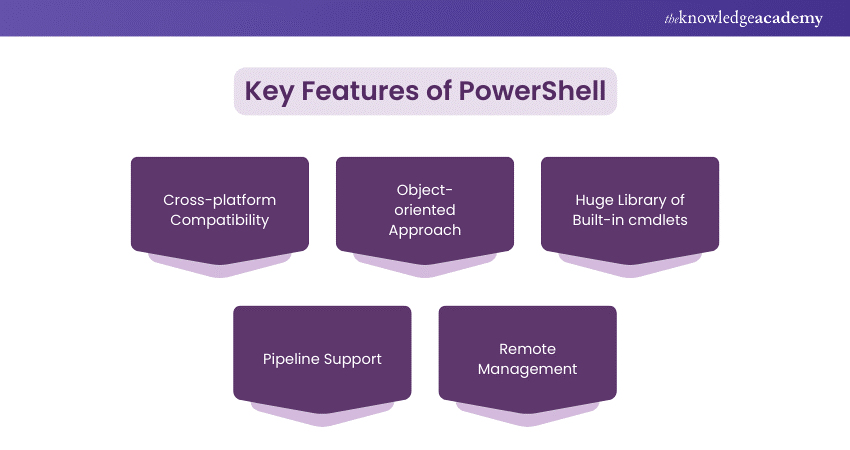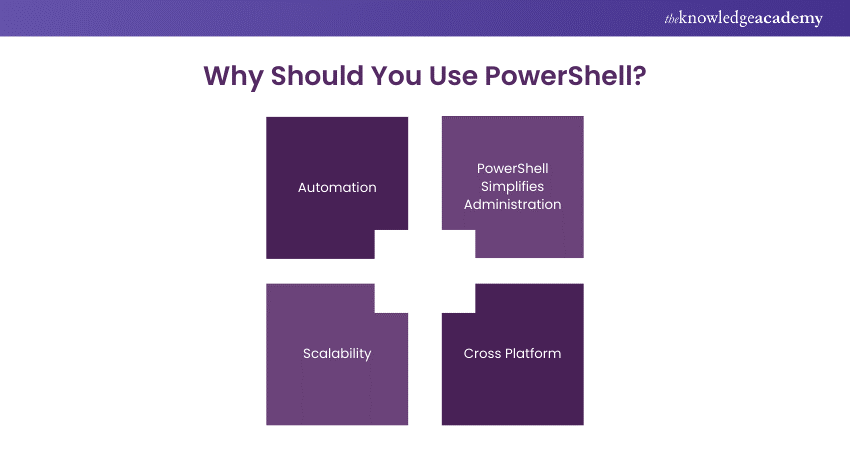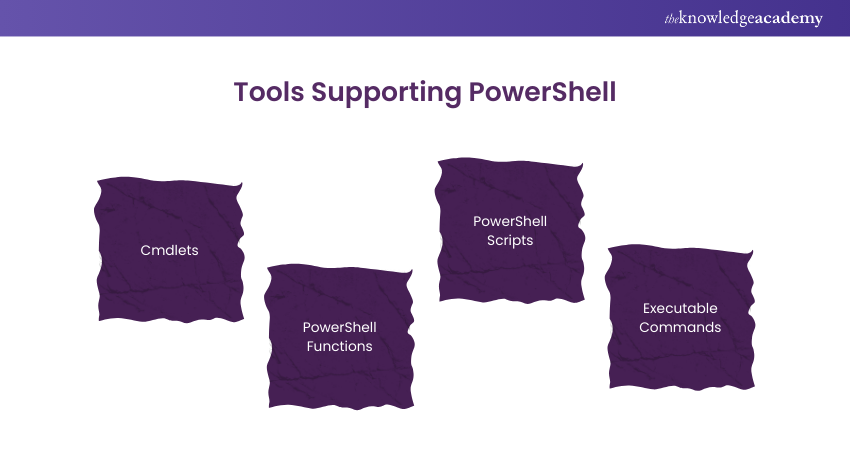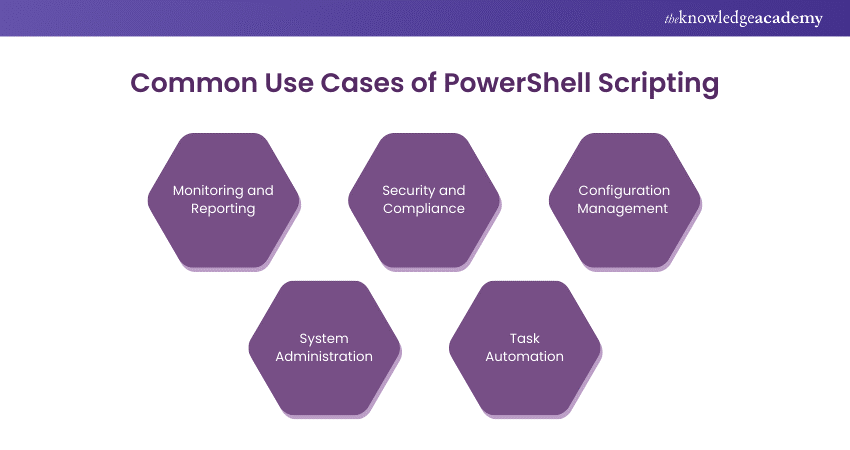We may not have the course you’re looking for. If you enquire or give us a call on 01344203999 and speak to our training experts, we may still be able to help with your training requirements.
We ensure quality, budget-alignment, and timely delivery by our expert instructors.

Understanding What is PowerShell goes beyond simply knowing it as a tool; it's about recognising its ability to streamline processes that would otherwise require multiple steps and various tools. With its robust set of commands known as cmdlets, PowerShell offers unparalleled control over system components, whether you’re managing servers, network devices, or cloud-based resources.
PowerShell is a widely used application developed by Microsoft for power automation and configuration management. Both IT professionals and developers use this tool for many applications that ease system management and automation of some tasks. In this blog, we will explore what is PowerShell, its key features, and how it functions across different platforms. We’ll also dive into common use cases where PowerShell shines, from system automation to security, and discuss its future in IT management.
Table of Contents
1) What is PowerShell?
2) What is PowerShell Scripting?
3) Key Features of PowerShell
4) Why Should You Use PowerShell?
5) How Does PowerShell Work?
6) Common Use Cases for PowerShell Scripting
7) The Future of PowerShell
8) Conclusion
What is PowerShell?
PowerShell is a command line shell and scripting language developed by Microsoft. It is primarily used for managing and automating tasks in Windows environments. Initially, PowerShell was released back in 2006 and since then, it has undergone several improvements and is now supported on all platforms like Linux and macOS.
PowerShell, in fact, allows the interaction with system components, management of configurations, and automation of administrative work through the execution of commands, which are known as cmdlets.
One of the most important reasons PowerShell stands out from any other traditional command-line interface is that it utilises objects instead of text. It means, for example, when you make a query or perform an operation in PowerShell, it returns structured data that can easily be manipulated or passed between cmdlets, making it infinitely more efficient and versatile for automation.
What is PowerShell Scripting?
PowerShell Scripting is the process of writing scripts using PowerShell language, executing a series of operations, or running a sequence of commands that must accomplish an automatic task. Scripts are particularly useful for repetitive tasks or complicated operations that require more than one step to accomplish.
PowerShell scripts are saved with the “.ps1” file extension and can be run directly from the PowerShell console or scheduled to run at predetermined times. It allows the user to have greater control over their systems without requiring any manual intervention.
Using PowerShell scripts, administrators can easily manage their IT infrastructure-be it updates deployment, system performance monitoring, or even managing configurations on the network.
Key Features of PowerShell
PowerShell offers several key features that make it a powerful tool for IT professionals. These include:

1) Cross-platform Compatibility: It supports both Windows, Linux, and macOS. It is anytime, anywhere tool to control environments in heterogeneous IT infrastructures.
2) Object-oriented Approach: Unlike traditional shells that work with text output, PowerShell works with objects, which then makes it much more efficient in handling data, processing, manipulating it, and piping it between commands.
3) Huge Library of Built-in cmdlets: There's a very large library of built-in, .NET-based cmdlets designed for every kind of functionality around file manipulation, amongst many, many other needs, up to and including configuration management.
4) Pipeline Support: Pipelining is also supported in PowerShell, allowing the user the ability to chain several cmdlets together, with output from one being piped in as an input to the next to carry out quite complex tasks into smaller, manageable parts.
5) Remote Management: PowerShell supports remote management. It helps manage multiple systems from a single machine.
Why Should You Use PowerShell?
PowerShell is an incredibly versatile tool that can easily simplify complex administrative tasks and allow for the efficient management of IT systems. Here are a few reasons why you should consider using PowerShell:

1) Automation: PowerShell is created to automate tasks. Whether you are managing a small network or a large organisation, automation of redundant activities saves time and minimises the chances of human errors.
2) PowerShell Simplifies Administration: Because PowerShell is integrated deeply with Windows systems, administrators can work with and configure system components without traversing many user interfaces.
3) Scalability: PowerShell scales from small job types to enterprise-wide automation. It is applied for either small environments or massive data centre management and handling thousands of servers.
4) Cross Platform: PowerShell is no longer bound within a Windows environment since it has introduced cross-platform support, making PowerShell an ideal choice for IT professionals managing multiple operating systems.
How Does PowerShell Work?
PowerShell works based on the set of tools available, such as cmdlets, scripts, and functions to interface with the underlying system. Here's how it works:

1) Cmdlets
Cmdlets are the building blocks of PowerShell. They are small, single-function commands named based on the verb-noun naming convention, such as "Get-Process", “Set-ExecutionPolicy". Cmdlets are designed to execute some tasks and can be used in pipelines to execute complex operations.
2) PowerShell Functions
Functions in PowerShell are used to allow a user to write blocks of code that can be re-used and can be used to perform a whole series of tasks. Unlike cmdlets, here functions can be custom-written and tailor-made for a particular use case. This places them at an excellent point for modularising scripts and improving the maintainability of code.
3) PowerShell Scripts
Scripts encapsulate a bunch of commands, functions, and logic in just one file. For instance, you can put together a script which will scan system logs, update configurations, and report on the health of systems, all in one go.
4) Executable Commands
PowerShell can run external executables, too. You can leverage the vast, traditional command-line tools and utilities right from within your PowerShell session. This flexibility lets you enjoy the good stuff already built into these older tools, along with the rich feature set available with PowerShell.
Master PowerShell automation! Elevate your admin skills with our Automating Administration With PowerShell AZ-040 Training - Join today.
Common Use Cases of PowerShell Scripting
There are many use cases for which PowerShell comes in handy because of its capabilities. Let's explore some common use cases:

1) Monitoring and Reporting
Some of the common scenarios for using PowerShell are system health monitoring or reporting generation. Administrators can script checks for CPU usage, disk space, or network activity and then generate the reports in formats such as HTML or CSV. This makes it easier to keep record of system performance and identify issues before they become critical.
2) Security and Compliance
It can enforce security policies and scan for compliance breaches. Organisations can ensure their system is secure and compliant with the industry by scripting periodic security audits and configuration checks.
3) Configuration Management
All organisations experience the challenges of managing the different configurations of their various servers and environments, but PowerShell makes it easier by allowing the administrators to automate the deployment and configuration settings for them.
4) System Administration
PowerShell is very much useful for general system management. One can use PowerShell commands to manage accounts, configure networking, update installations, and lots of other things that make the life of system administrators so much easier.
5) Task Automation
One of the most common uses of PowerShell is about automation of tasks. Whether it is scheduled backup or patch deployment automation, PowerShell scripts can save hours of manual effort from boring tasks quite easily.
The Future of PowerShell
The PowerShell system continues to grow and evolve in capabilities. With PowerShell Core, Microsoft has made a statement of intent about keeping the current version of PowerShell relevant in the cross-platform world. Future directions may include deeper integration with cloud environments, additional cmdlets for advanced automation, and better security tools, as market demand for IT automation increases.
As DevOps continues to grow in popularity, PowerShell promises to play an important role in the union of both worlds, and the flexibility it can offer will prove to be very helpful in using both automation and system management.
Build your Azure foundation! Get certified with our Microsoft Azure Fundamentals AZ-900 Course and take your IT career to the next level - Start today
Conclusion
PowerShell has turned out to be indispensable for any IT professional in the toolbox. As it is seen as an essential tool-a versatile tool, an automated solution, and a cross-platform tool-the current information age cannot neglect it. Whether you administer just a handful of servers or manage thousands of computers, understanding What is PowerShell can help you streamline your workflow, make your operations more efficient, and position them better to face the challenges.
Secure your PowerShell scripts and systems! Learn the best practices for safe automation today. Join our Implementing PowerShell Security Best Practices 40555A Training now.
Frequently Asked Questions
Can PowerShell Run on Other Platforms?

Yes, PowerShell is cross-platform and can run on Windows, Linux, and macOS. PowerShell Core, also known as PowerShell 7, supports all major operating systems (OS), making it versatile for managing diverse environments.
What is the Alternative to PowerShell?

The main alternatives to PowerShell are Bash for Linux and macOS users, Command Prompt for Windows, and third-party automation tools like Ansible, Python scripting, and Z Shell.
What are the Other Resources and Offers Provided by The Knowledge Academy?

The Knowledge Academy takes global learning to new heights, offering over 30,000 online courses across 490+ locations in 220 countries. This expansive reach ensures accessibility and convenience for learners worldwide.
Alongside our diverse Online Course Catalogue, encompassing 19 major categories, we go the extra mile by providing a plethora of free educational Online Resources like News updates, Blogs, videos, webinars, and interview questions. Tailoring learning experiences further, professionals can maximise value with customisable Course Bundles of TKA.
What is The Knowledge Pass, and How Does it Work?

The Knowledge Academy’s Knowledge Pass, a prepaid voucher, adds another layer of flexibility, allowing course bookings over a 12-month period. Join us on a journey where education knows no bounds.
What are the Related Courses and Blogs Provided by The Knowledge Academy?

The Knowledge Academy offers various Microsoft Azure Certification Courses, including the Microsoft Azure Fundamentals AZ-900 Course, and the Microsoft Azure Administrator AZ104 Course. These courses cater to different skill levels, providing comprehensive insights into Microsoft Azure.
Our Microsoft Technical Blogs cover a range of topics related to Microsoft Azure, offering valuable resources, best practices, and industry insights. Whether you are a beginner or looking to advance your Microsoft Technical skills, The Knowledge Academy's diverse courses and informative blogs have got you covered.
Upcoming Microsoft Technical Resources Batches & Dates
Date
 Automating Administration With PowerShell AZ-040 Training
Automating Administration With PowerShell AZ-040 Training
Mon 3rd Feb 2025
Mon 5th May 2025
Mon 18th Aug 2025
Mon 10th Nov 2025






 Top Rated Course
Top Rated Course



 If you wish to make any changes to your course, please
If you wish to make any changes to your course, please


